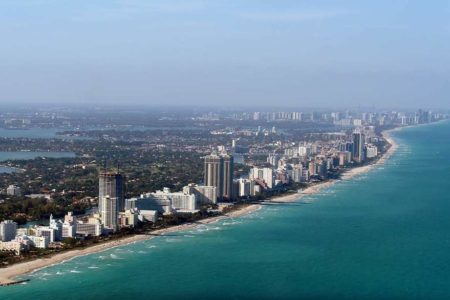
Here are some facts to consider before American “democratic socialists” look to Denmark for guidance, as Senator Bernie Sanders did during the 2016 presidential campaign.
First of all, Danes actually pay for their brand of socialism through heavy taxation. In Denmark, everyone pays at least the 25% value-added tax (VAT) on all purchases. Income tax rates are high. If you receive public support and are of working age and healthy enough to work, the state will require that you look for a job or it will force a job on you.
The willingness of all the Danes to pay high taxes is predicated on the country’s high degree of homogeneity and level of citizens’ trust in each other, what sociologists call “social capital.” By and large, Danes do not mind paying into the welfare state because they know that the money will go to other Danes like themselves, who share their values and because they can easily imagine themselves to be in need of help — as most of them, from time to time, will be.
Whenever politicians propose tax cuts, they are met with vehement opposition: So, you want to cut taxes? What part of the welfare state are you willing to amputate? And that ends the debate.
Danes, in contrast to American socialists gaining ground in the Democratic Party, are increasingly aware that the welfare state cannot be sustained in conditions of open immigration. A political party agitating for “no borders” could never win a Danish election. Danes do not suffer from historical guilt: they have not attacked any other country for more than two centuries and have never committed a genocide.
Moreover, there is an even deeper truth to ponder: Denmark is not really socialist but constitutes a sui generis fusion of free-market capitalism and some socialist elements. Denmark has no minimum wage mandated by law. Wages, benefits and working conditions are determined through negotiations between employers and trade unions. 67% of Danish wage-earners are members of a union, compared to 19% in Germany and 8% in France. Strikes and lockouts are common, and the government will usually stay out of labor conflicts unless the parties are unable to agree.
It is uncomplicated for enterprises to fire workers, which gives them great flexibility to adapt to shifting market conditions. To alleviate the pain, the state has in place a number of arrangements such as generous unemployment benefits and programs to retrain and upgrade redundant workers.
Danish companies must make ends meet or perish. They generally will not get handouts from the government.
Denmark is more free-market oriented than the US. According to the Heritage Foundation’s 2018 Index of Economic Freedom, Denmark is number 12, ahead of the United States (number 18). Venezuela is at the bottom, one place ahead of number 180, North Korea.
Mads Lundby Hansen, chief economist of Denmark’s respected pro-free-market think tank CEPOS, comments:
“Very high taxes and the vast public sector clearly detract in the capitalism index and reduce economic freedom. But Denmark compensates by protecting property rights, by low corruption, relatively little regulation of private enterprise, open foreign trade, healthy public finances and more. This high degree of economic freedom is among the reasons for Denmark’s relatively high affluence.”
Trish Regan recently claimed on Fox Business that Danes pay a “federal tax rate” of 56% on their income. This is misleading. The 55.8% is the levied on the marginal tax for the top income bracket, only on the part of their income above DKK 498,900 ($76,500). Any income under DKK 498,900 is taxed at lower rates. And the 55.8% marginal rate does not represent a “federal” or “national” rate. It represents the total of all taxes on income: national tax, regional tax, municipal tax and labor market tax. It does not, however, include Denmark’s 25% value-added tax (VAT), paid on all purchases.
Regan also claimed that Danes pay a 180% tax on cars. While it is true that there was once a maximum tax of 180% on care in Denmark, the vehicle tax rates have been lowered in recent years. Today, the first DKK 185,100 ($28,400) of the price of a gas- or diesel-powered car is taxed at 85%, and if the car’s price is above DKK 185,100, the remaining amount is taxed at 150% — which is of course bad enough.
Denmark’s total tax burden amounts to 45.9% of GDP, the highest of all countries in the Organisation for Economic Co-operation and Development (OECD).
As pointed out in the Fox Business segment, all education for Danes is tuition-free, all the way through to a Ph.D. Not only that; the state will, within certain time constraints, pay students to study. For students at university level no longer living with their parents, the monthly cash grant comes to almost $1,000 per month. No fewer than 325,000 students out of a total population of 5.6 million benefit from this generous arrangement setting the state back to the tune of DKK 20.9 billion or 1% of GDP (latest 2018 figures just in and supplied by Mads Lundby Hansen). Denmark even pays student support to 20,000 foreign students.
Attempts by fiscal conservatives to cut down on payments to students have been successfully resisted by the vociferous and influential student organizations; at present it would appear impossible to muster anything like a parliamentary majority to limit the student handouts.
Fox Business is right that a great many Danes are on public transfer payments. Government figures from 2017 indicate that 712,300 Danes of working age (16-64) — not including recipients of student benefits — get public financial support. But Regan’s claim that most Danes do not work is ludicrous. According to Statistics Denmark, 69.9% of Danes aged 16-64 are active in the labor market.
How can Denmark pay for its comprehensive welfare state, which includes free medical care regardless of the severity of your condition? Regan claims that Denmark is “heavily in debt.” Not so. As it turns out, Denmark is among the least indebted countries in the world, even when compared to other Western countries. The Danish government’s gross debt stands at 35.9% of GDP. Compare that to, e.g., The United Kingdom (86.3 %), The United States (108%), Belgium (101%), Canada (86.6%), France (96.3%), Germany (59.8%), The Netherlands (53.5%), Italy (129.7%), Spain (96.7%) and even Switzerland (41.9%).
Comparing Denmark to the US, Madsen notes that the latter has a problem with fiscal sustainability that may necessitate tax increases. Denmark enjoys what he labels fiscal “oversustainability” (“overholdbarhed”).
At a time when socialism appears to be popular among certain sections of the American population, its proponents would do well not to cite Denmark as a model. The Danish fusion of free-market capitalism and a comprehensive welfare state has worked because Denmark is a small country with a very homogeneous population. This economic and social model rests on more than 150 years of political, social and economic compromises between peasants and landowners, business-owners and workers, and right- and left-leaning political parties. This has led to a measure of social and political stability that would be hard to emulate in much larger and more diverse counties such as the United States.






Recent Comments